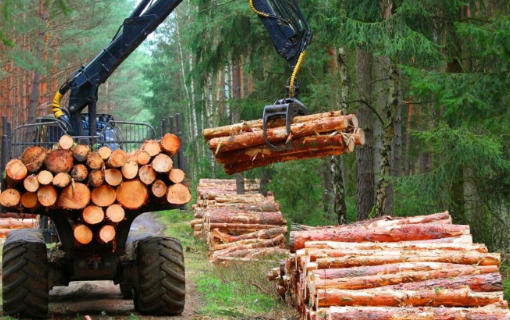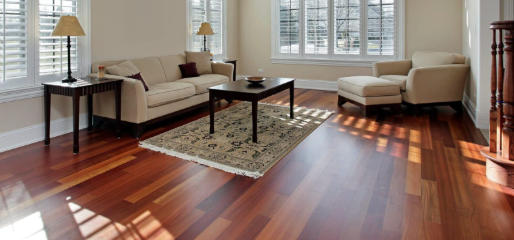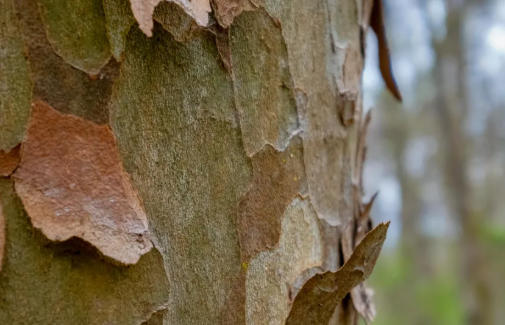










Content Menu
● Hardwood vs Softwood: The Essential Differences
>> Growth Rate and Availability
>> Anatomy: The Science Behind the Structure
>> Hardness, Strength, and Durability
● Physical Characteristics and Appearance
● How to Identify Hardwood Timber
● Popular Hardwood and Softwood Species
● Applications: Where Each Type Excels
● Treated Softwoods: Shifting the Performance Profile
● Sustainability and Environmental Impact
● Decision Guide: When to Choose Hardwood or Softwood Timber?
>> When to Use Hardwood Timber
>> When to Use Softwood Timber
● Advanced Timber Grading and Selection
● FAQ
>> 1. What is the basic difference between hardwood and softwood?
>> 2. Does the term ‘timber' refer only to hardwood?
>> 3. Are all hardwoods harder than softwoods?
>> 4. What are common uses of hardwood timber?
>> 5. How can I identify if a piece of timber is hardwood?
Timber is a foundational resource in construction, furniture-making, joinery, and various industries that rely on versatile, strong, and visually pleasing wood materials. ASKED regularly: Is timber a hardwood? This guide dispels misconceptions, explaining timber's classification, how to distinguish hardwood from softwood, and the implications for selection, performance, and sustainability.[1][6]

Timber refers to wood processed for structural or manufacturing use. It can include beams, planks, sheets, boards, and other forms ripped or sawn from tree trunks. Timber is not synonymous with “hardwood”; rather, it's an umbrella term referring to wood from both hardwood and softwood trees, utilized according to purpose and species.[2][10][11]
- Hardwood: Produced from angiosperm trees – mainly broad-leaved, deciduous species that lose leaves annually. Trees include oak, ash, walnut, maple, birch, beech, sapele, and mahogany. Seeds are enclosed in fruit, nut, or pod.
- Softwood: Comes from gymnosperm trees, which are typically coniferous and evergreen, retaining needle-like leaves year-round. Common softwoods: pine, spruce, fir, cedar, redwood, and larch. Seeds are exposed or produced in cones.[4][5][1]
- Hardwoods grow much more slowly, developing dense, strong wood but making them less available and more expensive.
- Softwoods grow rapidly, are easier to harvest, and thus dominate commercial timber markets, especially in construction.[5][6][4]
Hardwoods:
- Vessel elements (pores) for water/nutrient transport, leading to complex and heavy grain structures.
- Tightly packed growth rings and more visual “character” in lumber.
Softwoods:
- Simpler cell structure: no vessel pores, transport occurs via tracheids.
- Wider spaced rings, simple or even grains, generally fewer defects.[6][7][1][2]
Hardwoods usually deliver higher strength, density, and scratch resistance. This is due to slower growth and a denser cellular structure. The Janka scale is used to measure actual hardness—though exceptions exist (balsa is a hardwood, yet extremely soft; yew is a softwood but remarkably dense).[3][12][1][6]
| Property | Hardwood | Softwood |
|---|---|---|
| Density | High, heavier | Lower, lighter |
| Hardness | Strong, scratch resistant | Flexible, chips more easily |
| Grain | Complex, pronounced | Simple, faint |
| Color | Darker, richer | Lighter, yellowish or pale |
| Defects | Fewer knots, more character/grain | More knots, fewer mineral streaks |
| Durability | Superior outdoors, fire resistance | Needs treatment for weathering |
Generally, higher density means higher strength and durability, but always check species and application requirements.[7][9][1][2][5][6]
- Hardwoods: Visible pores yield grave, heavy grain patterns. Examples: oak (coarse), walnut (bold), maple (fine, sometimes bird's-eye figure).[2][6]
- Softwoods: Lack pores; grain is simpler, more uniform, and subtle. Pine and spruce are good illustrations.[1][6]
Usually, hardwoods present darker, richer colors; walnut, cherry, and mahogany stain beautifully. Softwoods lean lighter, often with a yellow or pale tint—though exceptions exist (red cedar, redwood).[6][2]
Knot frequency is higher in softwood (especially pine and spruce), reducing structural integrity. Both types can show character and figure, but hardwoods tend to be clearer on at least one face for fine woodworking.[2][6]
- Leaves: Broad and flat for hardwoods; needle-like, evergreen for softwoods.
- Grain: Heavier, more complex in hardwoods.
- Weight: Heavier and more dense hardwood.
- Color: Darker tones for hardwoods, lighter for softwoods.
- Test: With a chisel—hardwoods are more resistant to chipping.
Ultimately, species ID is most accurate: angiosperms (hardwood); gymnosperms (softwood).[7][1][6][2]

- Oak
- Ash
- Walnut
- Mahogany
- Maple
- Sapele
- Beech
- Meranti[9][13][6]
These offer premier strength, workability, and appearance for luxury furniture, flooring, cabinetry, and specialty items.
- Pine
- Spruce
- Fir
- Cedar
- Redwood
- Larch
Valued for fast growth, ease of working, and lower cost; dominate framing, decking, and mass-market furniture.[12][4][5][9]
- Floors, architectural paneling
- High-end cabinetry/furniture
- Musical instruments, sports equipment
- Shipbuilding, tool handles, crafts
- Veneers, specialty joinery[13][9][6]
- Building frames, house construction
- Decks, fences, posts, packing crates
- Garden furniture, boxes, pallets
- General utility and mass-production goods[4][5]
Technological advancements mean softwoods can be chemically or thermally treated to enhance performance, mimicking many hardwood characteristics:
- Thermo-modified woods (ThermoWood®, Thermo-Tulipwood) offer improved exterior durability and stability; original softwood becomes decay-resistant and stable.[1]
- Pressure-treated and tanalised softwoods resist moisture, insects, and decay and serve outdoor roles where untreated wood would fail.[1][2]
Some naturally-durable softwoods, like Western Red Cedar, compete with hardwood for certain exterior applications.[2][1]
Hardwoods: Scarcer due to slow growth. Felling impacts local ecology more profoundly. Responsible harvesting and sourcing (FSC, PEFC certification) is vital for sustainability.[14][15][6]
Softwoods: Fast growth cycles mean easier renewal, lower environmental impact, and dominance in construction supply chains.[11][12][14][6]
Global timber markets now favor certified wood, stewardship, and legal logging to ensure long-term ecological health and supply viability.
- Maximum strength, load-bearing, and longevity required
- Premium aesthetics or complex grain pattern sought
- Exposure to heavy wear or challenging conditions (floors, tools, exteriors)
- Willingness to pay for premium materials
- Cost savings and mass production
- Framing, rough carpentry, packing, fabrication
- Applications where weight reduction is desirable
- Treated softwood for outdoor/weather-resistant roles
Consult the species and grade of timber to ensure it aligns with project requirements—do not rely solely on the “hardwood” or “softwood” label.
Timber grading incorporates species, strength, appearance (knots, splits, grain uniformity), moisture content, and dimensional stability. For engineered products (laminated beams, plywood), the underlying timber species dramatically affects integrity and lifespan.
- Structural lumber: Graded for strength, load-bearing
- Joinery/furniture wood: Graded for appearance, ease of finish
- Specialty woods: Selected for grain, color, rarity
Engineered timber products often combine hardwood and softwood to maximize performance for specialty applications.[6][2]
Timber, as a material, encompasses hardwood and softwood obtained from a spectrum of tree species. Classification is based on botanical lineage: hardwoods from broadleaf angiosperms, softwoods from needle-leaf gymnosperms. While hardwoods usually excel in strength, density, and durability, softwoods are essential for rapid production, cost-effectiveness, and versatility. Effective identification considers anatomical features, species, grain, and workability. Responsible sourcing, grading, and treatment ensure the selected timber performs optimally for its intended use and supports environmental health. Timber's variety remains its greatest strength—choose wisely, with knowledge of each type's characteristics and optimal applications.

Hardwoods come from angiosperm trees with broad leaves and enclosed seeds, while softwoods originate from gymnosperm (coniferous) trees with needles and exposed seeds.[5][12][1]
No; ‘timber' is a comprehensive term for wood in construction, finishing, and manufacturing, including both hardwood and softwood species.[10][11][5][1]
Not always. Most hardwoods are denser and more durable, but exceptions (balsa) exist that are softer than some tough softwoods (yew, pine).[3][12][6]
Flooring, cabinetmaking, luxury furniture, tool handles, sports equipment, musical instruments, and high-wear applications due to durability and strength.[13][5][6]
Examine leaf type if available, grain complexity, weight, color, and use a chisel test for hardness. Vessel pores (visible under magnification) and botanical information (angiosperm/gymnosperm) confirm classification.[16][17][7][6][1][2]
[1](https://duffieldtimber.com/the-workbench/timber-trends/hardwood-vs-softwood-what-are-the-differences)
[2](https://www.buskirklumber.com/hardwoods-vs-softwoods/)
[3](https://www.reddit.com/r/BeginnerWoodWorking/comments/4ltmwy/please_explain_hardwood_vs_softwood/)
[4](https://www.laver.co.uk/blog/hardwood-vs-softwood-whats-the-difference.html)
[5](https://www.arnoldwood.com/blog/what-is-the-difference-between-hardwood-and-softwood/)
[6](https://northcastlehw.com/blogs/wood/hardwood-vs-softwood-lumber-uses-and-differences)
[7](https://extension.psu.edu/hardwood-or-hard-wood/)
[8](https://www.youtube.com/watch?v=X7nBK1Xpc9o)
[9](https://sherwoodlumber.com/hardwood-vs-softwood-whats-the-difference/)
[10](https://mrtimbers.com/timber-vs-wood/)
[11](https://www.thisoldhouse.com/woodworking/21015421/the-language-of-lumber)
[12](https://markslumber.us/blog/softwood-vs-hardwoods-whats-the-difference)
[13](https://smithfieldtimber.co.uk/what-is-hardwood/)
[14](https://www.mortlock.com.au/learning/hardwood-vs-softwood-pros-and-cons/)
[15](https://reliancetimber.com/hardwood-vs-softwood-reliance-timbers-guide/)
[16](https://www.youtube.com/watch?v=HKU8EKGSsHY)
[17](https://www.youtube.com/watch?v=Lj5MPkEsuSY)